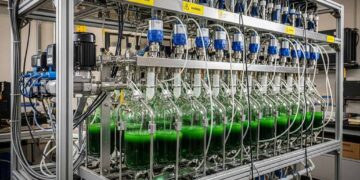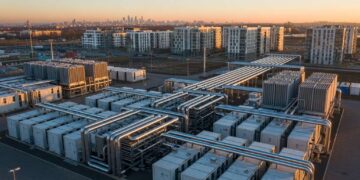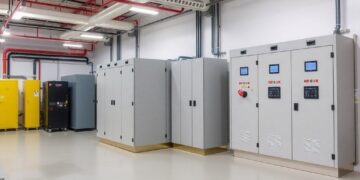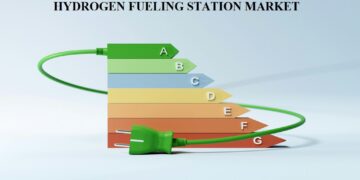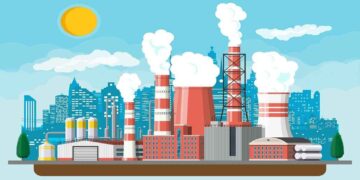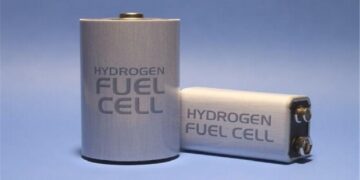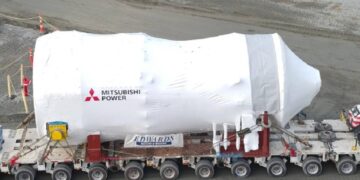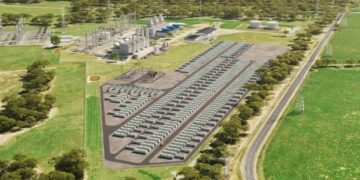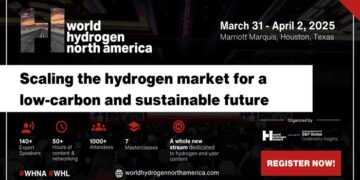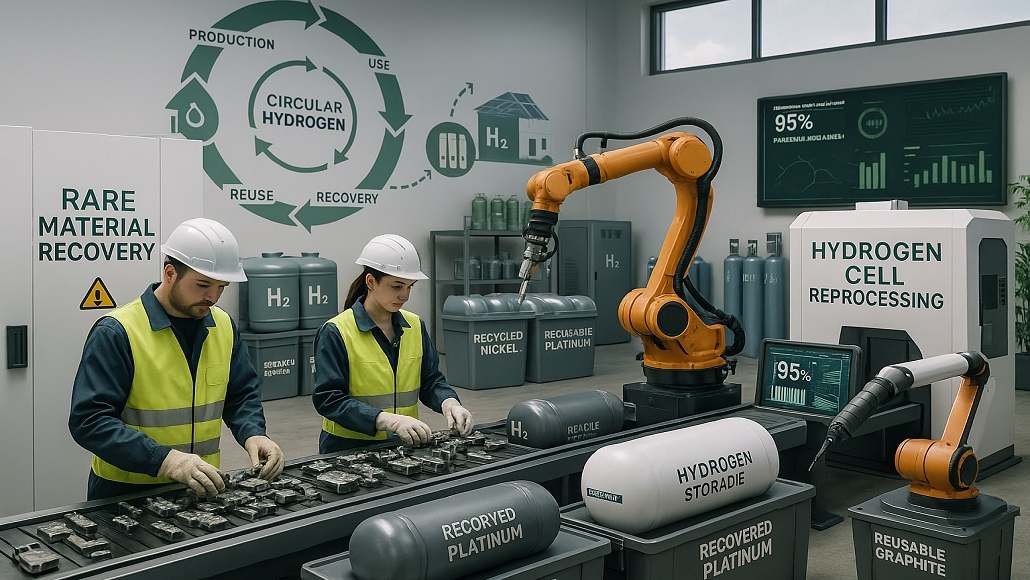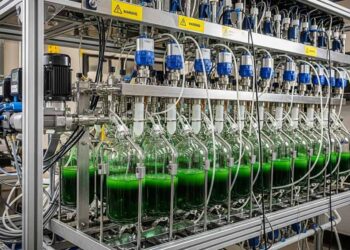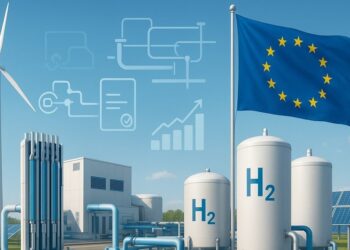Hydrogen technologies are rapidly emerging as one of the most viable and impactful paths to decarbonize energy systems globally. These range from electrolysers producing green hydrogen for industrial applications to fuel cells running net-zero emission transportation applications. Collectively, hydrogen technologies are moving the world to a more sustainable way of life. Yet, the extensive utilization of hydrogen technologies has its own limitations, most notably the reliance upon rare and expensive metals like platinum, iridium, and other key metals employed in fuel cells and electrolysers.
These rare materials are not only costly but also environmentally demanding to process and mine. As the use of hydrogen technology increases, promoting sustainable use of such materials is a matter of high priority. It is here that the idea of circular hydrogen, which emphasizes recycling and reuse of rare materials, comes into focus. Closing the material loop will help the industry save waste, minimize costs, and make hydrogen technologies less environmentally taxing.
Importance of Rare Materials in Hydrogen Technology
Fuel cells and electrolysers depend on rare elements to make the chemical reactions for hydrogen production and use feasible. In fuel cells, platinum catalysts are used to support the oxygen reduction reaction (ORR), an essential step to convert hydrogen into electricity. Likewise, iridium and ruthenium catalysts are used by electrolysers in the oxygen evolution reaction (OER) in water electrolysis.
These materials are also valued for their good catalytic efficiency, thermal stability, and resistance to corrosion. Their high cost of extraction and rarity impose major economic and environmental challenges.
Economic and Environmental Challenges of Rare Material Dependency
Dependence on scarce materials has extensive repercussions regarding the scalability of hydrogen technology. Platinum and iridium’s high prices may raise the initial investment for fuel cells and electrolysers, serving as an impediment to market penetration. Supply chain risks that could inhibit production and increase costs exist for specific materials from specific geographical locations (e.g. platinum from South Africa and palladium from Russia).
There are numerous environmental issues related to the extraction and processing of rare materials, including loss of biodiversity, water contamination and greenhouse gas emissions. These effects directly contradict the sustainability objectives hydrogen technology is working towards. Reconsidering the cycle of these vital materials through recycling and reuse is therefore necessary for preserving the environmental health of the hydrogen economy.
Recycling Rare Materials: Processes and Innovations
Recycling of rare materials from hydrogen technology is an advanced procedure that involves a complex combination of chemical, thermal, and mechanical methods. The basic goal is to recover applicable metals from end-of-life components in a manner that retains their catalytic and functionality, so that metals can be effectively re-entered into the manufacturing process. In a normal sequence, end-of-life electrolysers or fuel cells will be recovered and disassembled to retrieve components such as: the catalyst layer, membrane and support structure. After being separated, the catalyst layers comprising valuable metals like platinum, iridium, and ruthenium undergo a recovery process.
Chemical leaching is the most typical method, in which solvents extract the metals from their substrate materials. It is followed by purification methods such as precipitation, in which the dissolved metals are precipitated out as insoluble compounds, or electrodeposition, in which metals are electrodeposited on electrodes in their pure form. Improvements in hydrometallurgical processes are enhancing the efficiency of the above steps, yielding better recovery rates and reducing waste.
Another innovative technique on the rise is pyrolysis, a heat-based process by which used components are heated to high temperatures without oxygen. Organic material is decomposed using this method, while metallic residue remains and may be further refined. Pyrolysis is gaining popularity because it can process intricate assemblies without requiring a lot of pre-processing.
- Platinum Recovery from Fuel Cell Catalysts
Platinum is a keystone of recycling rare materials from hydrogen technology as the main catalyst for oxygen reduction reactions. Its cost and limited supply, though, make recycling a major strategy for sustainable fuel cell manufacturing. Platinum recovery from used fuel cells starts with the removal of catalyst-coated membranes from other materials, including metallic plates and polymer layers.
After separation, these membranes are subjected to chemical solvents to dissolve the platinum. Sulfuric acid and aqua regia are the most frequently employed leaching agents because they have a high extraction efficiency for platinum. Upon dissolution, purification is applied to the solution in order to eliminate impurities so that the extracted platinum will be satisfactory in its new catalyst in terms of high purity.
Thermal recovery is one other method of platinum recovery, whereby exhausted catalysts are heated within controlled conditions to volatilize non-platinum constituents while a concentrated platinum residue remains.
New advancements in recycling technology have, however, seen remarkable enhancements in recovery rates. For example, scientists have developed nano-engineered membranes that can accelerate the platinum dissolution rates, thus enhancing recovery speed and efficiency. Novel electrochemical methods are being researched, which uses low electrical currents to recover platinum – reducing the use of more hazardous chemical solvents and offering a more sustainable process.
By recycling platinum from retired fuel cells, makers not only decrease their dependency on newly mined material but also support circular supply chains, where the same material is constantly recycled to drive the hydrogen economy.
- Iridium and Ruthenium Recovery from Electrolysers
Electrolysers are central to the production of green hydrogen, and iridium and ruthenium are main catalyst materials for the oxygen evolution reaction. It is more challenging to recover the rare and costly metals as compared to platinum because they are very stable and resistant to chemical dissolution.
The recycling of ruthenium and iridium starts with the deconstruction of electrolyser stacks, separating the catalyst-coated electrodes and membranes. Chemical leaching is typical, but it demands highly specialized solvents that can break down stable oxides produced by these metals. Methanesulfonic acid and other sophisticated solvents have been found to be favorable in recent research, facilitating effective metal recovery with minimal degradation.
Thermal methods, including plasma arc recycling and pyrolysis, are also being used or researched to recycle iridium and ruthenium. These thermal processes heat used parts to extreme extremes where organic binders are thermally stripped from the materials and vapours are generally either immediately treated or condensed to a liquid. This concentrates the metals for further recovery processing. Plasma arc tech is incredibly efficient and low-waste and offers a current recovery process with the benefit of recovering multiple metals with one process to significantly lower environmental costs.
Material Upcycling: Beyond Recovery
Recovery can generally refer to established recycling processes that focus on the recovery of materials as close to their origin and properties and performance. In contrast, upcycling signifies the processes where the properties of recovered materials are upgraded for performance. This is especially applicable to hydrogen technologies, where the functional efficiency of catalysts can dramatically affect system performance.
For instance, platinum recovered from spent catalysts can be mixed with other metals, like cobalt or nickel, to produce bimetallic catalysts with greater durability and performance. Improving the performance of the catalyst entails similar or better performance with less platinum in use, hence reduced material cost, longer fuel cell life.
Upcycling can also be used in the design of combination catalysts, where the metal recovered is combined with graphene or carbon nanotubes to improve conductivity and stability. Hybrid systems find special potential for future fuel cells and electrolysers, where the loading of the catalyst can be reduced without efficiency loss. Upcycling can further include the refunctionalization of used components.
Circular Supply Chains for Hydrogen Technologies
The idea of circular supply chains is picking up steam as the sustainable model for hydrogen technologies. Circular supply chains are about producing products and systems in a way to easily recover, reuse and recycle materials and ultimately to develop a closed-loop system.
For electrolysers and fuel cells, a circular supply chain means thinking about recyclability when designing components. Modular designs permitting easy extraction of the catalyst layers and other key components facilitate recycling by minimizing labor and processing charges.
Additionally, manufacturers are introducing new take-back programs, in which end-users bring spent devices back to the manufacturer to recycle. These programs provide a constant source of recoverable materials while minimizing waste and environmental effects.
Policy Support and Regulatory Frameworks
Policy measures and regulatory assistance are essential in promoting the uptake of recycling practices. Recycling can be encouraged by governments through tax credits, grants for research and development, and subsidies. Transparent regulations for material recovery and waste management can also make recycling a seamless part of the hydrogen industry.
For instance, the European Union’s Circular Economy Action Plan has among its strategies measures to support the recycling of strategic raw materials, such as those to be applied in hydrogen technologies. Parallel policies in other parts of the world can fuel international action toward creating a sustainable supply chain for hydrogen.
Conclusion
Recycling rare hydrogen materials in fuel cells and electrolysers is not only an environmental necessity—it is a strategic one for the hydrogen industry. Through the adoption of the principles of circular hydrogen, the industry will be able to surmount the difficulties with material shortage, high cost, and environmental burden.
The shift to a circular hydrogen economy calls for a value chain collaboration, starting with product design for recycling rare materials from hydrogen and upscaling advanced recovery technologies. As innovation progresses, policy backing, industry commitment, and continued efforts will bring the vision of a sustainable and circular hydrogen economy within reach.









